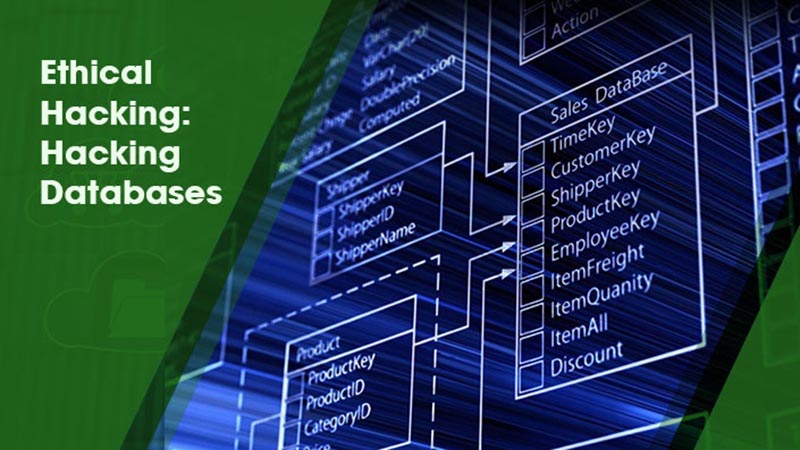About this course
The Hacking Databases Course is designed to provide learners with both the foundational knowledge and practical skills needed to secure and exploit relational database systems, a critical domain in modern cybersecurity. Databases form the backbone of enterprise applications and hold highly sensitive information, making them one of the most targeted assets in cyberattacks. This course introduces participants to the tools, techniques, and best practices necessary to understand, test, and harden databases against common threats.
Starting with the basics of database security, learners will explore the architecture, common vulnerabilities, and defensive strategies for systems such as MySQL, Microsoft SQL, and Oracle RDBMS. The course then delves into SQL Injection attacks, beginning with first-order exploits, followed by advanced testing using tools like OWASP ZAP and SQLMap to simulate real-world penetration testing. Learners will also gain exposure to Shodan, a powerful search engine for identifying exposed systems, and build their own MySQL lab environments for safe, hands-on practice.
The curriculum emphasizes defensive strategies such as MySQL lockdown techniques, operating system hardening, and big data security considerations. Each chapter concludes with practical exercises, enabling participants to immediately apply their skills in controlled scenarios.
Designed for both beginners and IT professionals, the course also aligns with the growing demand for cybersecurity expertise. With over a million cybersecurity job openings worldwide, learners who complete this program will be well-positioned for entry-level cybersecurity roles, including penetration testing and security operations.
By the end of this course, students will not only understand how to exploit database vulnerabilities but also how to secure them—providing dual expertise that is highly valuable for certification exams and professional practice.
Learning Objectives
By the end of this course, learners will be able to:
• Explain database security principles and common vulnerabilities.
• Perform SQL Injection attacks and understand their implications.
• Use ZAP and SQLMap for automated vulnerability testing.
• Configure and secure MySQL environments against common threats.
• Apply operating system hardening to support database security.
• Identify exposed systems using Shodan and assess potential risks.
• Secure big data environments with best practices.
Target Audience
• Beginners aspiring to start a career in cybersecurity.
• IT professionals preparing for certification exams in security or penetration testing.
• System administrators and developers seeking to secure databases.
• Individuals pursuing entry-level roles in cybersecurity operations, database security, or penetration testing.
Prerequisites
• Basic understanding of computer networks and operating systems.
• Familiarity with command-line interfaces and scripting is helpful but not required.
• No prior database security or penetration testing experience is necessary—this course is beginner-friendly.
Starting with the basics of database security, learners will explore the architecture, common vulnerabilities, and defensive strategies for systems such as MySQL, Microsoft SQL, and Oracle RDBMS. The course then delves into SQL Injection attacks, beginning with first-order exploits, followed by advanced testing using tools like OWASP ZAP and SQLMap to simulate real-world penetration testing. Learners will also gain exposure to Shodan, a powerful search engine for identifying exposed systems, and build their own MySQL lab environments for safe, hands-on practice.
The curriculum emphasizes defensive strategies such as MySQL lockdown techniques, operating system hardening, and big data security considerations. Each chapter concludes with practical exercises, enabling participants to immediately apply their skills in controlled scenarios.
Designed for both beginners and IT professionals, the course also aligns with the growing demand for cybersecurity expertise. With over a million cybersecurity job openings worldwide, learners who complete this program will be well-positioned for entry-level cybersecurity roles, including penetration testing and security operations.
By the end of this course, students will not only understand how to exploit database vulnerabilities but also how to secure them—providing dual expertise that is highly valuable for certification exams and professional practice.
Learning Objectives
By the end of this course, learners will be able to:
• Explain database security principles and common vulnerabilities.
• Perform SQL Injection attacks and understand their implications.
• Use ZAP and SQLMap for automated vulnerability testing.
• Configure and secure MySQL environments against common threats.
• Apply operating system hardening to support database security.
• Identify exposed systems using Shodan and assess potential risks.
• Secure big data environments with best practices.
Target Audience
• Beginners aspiring to start a career in cybersecurity.
• IT professionals preparing for certification exams in security or penetration testing.
• System administrators and developers seeking to secure databases.
• Individuals pursuing entry-level roles in cybersecurity operations, database security, or penetration testing.
Prerequisites
• Basic understanding of computer networks and operating systems.
• Familiarity with command-line interfaces and scripting is helpful but not required.
• No prior database security or penetration testing experience is necessary—this course is beginner-friendly.
Hacking Databases
1 Parts
Hacking Databases
-

0
0 Reviews




